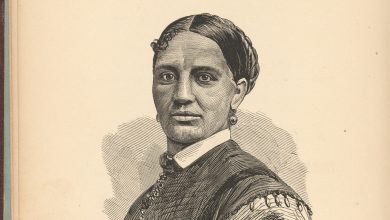Review: The Met’s ‘Turandot,’ Strongly Sung, Garishly Staged

By opening its season a few weeks ago with Terence Blanchard’s “Fire Shut Up in My Bones,” the first work by a Black composer in its history, the Metropolitan Opera was attempting to engage with the present moment, in all its roiling complexities.
But on Tuesday the old Met, a company of grand tradition and unabashed spectacle, returned with a revival of Puccini’s “Turandot” in Franco Zeffirelli’s glittering, gaudy, opulent, tacky and overwhelmingly popular 1987 production.
When this production was last mounted, in the fall of 2019, the lead roles of Turandot, an icy Chinese princess, and Calàf, the prince who seeks to win her love, were sung splendidly by the soprano Christine Goerke and the tenor Yusif Eyvazov. Assuming these demanding parts again on Tuesday, they were even better.
But 2019 seems a long time ago. Much has changed since the pandemic forced the closure of cultural institutions around the world, including a wave of anti-Asian hostility that has compelled the arts to re-examine lingering prejudices and racist stereotypes. For some, “Turandot” — not just Zeffirelli’s extravagant production, but the opera itself, set in the fantastical Peking of legend — is an example of the problem. As much as I love the music, and as often as I’ve seen (or put up with) this staging, it was impossible not to view it this time in this context.
To hear Puccini’s score as rife with awkward evocations of Asian exotica and stereotypes is, to me, unfair. The story of “Turandot,” which is based on a fairy tale by the 18th-century Italian playwright Carlo Gozzi, prodded Puccini, who had already absorbed elements of Asian music, to explore those sources even further. In the score, he incorporates several Chinese melodies. Like Debussy, who had an epiphany when he attended an 1889 exposition of Asian arts and culture in Paris, Puccini was genuinely excited by Chinese culture. He doesn’t just drop these tunes into this score, but blends them — with nuance and respect — into his own Italianate, 20th-century harmonic language.
Still, the characters can come off as clichéd or worse. And it’s too easy to dismiss concerns by saying the opera is just a fairy tale, or that Zeffirelli’s production is just an over-the-top costume epic that shouldn’t be taken too seriously.
Perhaps the most problematic characters — at least in Zeffirelli’s interpretation — are the trio of royal ministers with names that can make today’s audiences cringe: Ping, Pang and Pong (in this revival, Hyung Yun, Tony Stevenson and Eric Ferring). True to Gozzi, Puccini was evoking stock types out of commedia dell’arte. As the ministers bicker, chatter and fret over the deadly riddles Turandot puts her suitors through, he gives the three ministers much bustling, comedic music to sing. Yet the orchestra keeps needling the vocal lines with jabbing dissonances and modernist harmonic twists, so a sober subtext comes through.
And there are stretches when the ministers pine for their homes in the country and yearn for the old times that are some of the most beguiling music in the opera. These ravishing episodes are lush with Impressionist-like harmonic writing and hazy colorings. (You almost hear Puccini saying, “Take that, Debussy!”) The issue is less the score than the production: The Met could rid Zeffirelli’s staging of the mincing, fan-waving antics, allowing the ministers to appear as the sage observers they are.
Goerke and Eyvazov sang so well that I was swept up in Puccini’s music during their scenes, despite the silvery extravagance of the imperial palace, here so bright you almost squint. Goerke sang the daunting aria “In questa reggia” with steely sound and thrilling intensity, and, later, soared impressively over the full chorus and orchestra. Eyvazov, an athletic-looking Calàf, had beefy sound and clarion top notes, getting a big ovation for his “Nessun dorma.”
The soprano Gabriella Reyes, her voice radiant and rich in vibrato, was an uncommonly strong Liù, the servant in love with Calàf; Timur, Calàf’s father, was the stalwart bass-baritone James Morris, appearing 50 years after his Met debut. The superb Met chorus has Puccini’s score and Zeffirelli’s staging down pat; the singing in the big ensemble scenes was glorious. The conductor Marco Armiliato led a sure-paced and colorful performance.
But what is the Met to do with this production, which seems increasingly anachronistic? Peter Gelb, the company’s general manager, got burned in 2009 when he replaced Zeffirelli’s grandly realistic production of “Tosca” with a sparer, grimmer staging that was booed at its premiere and, in time, cast aside. This “Turandot” has drawn audiences for decades. But the time may have come for a more probing and restrained take on what is — for me and many others — Puccini’s great final opera.
Turandot
Through Nov. 16 (and in the spring with a different cast) at the Metropolitan Opera, Manhattan; metopera.org.





